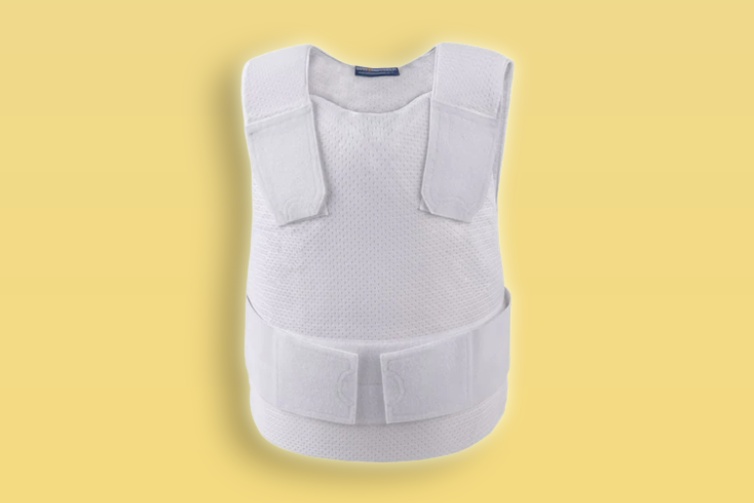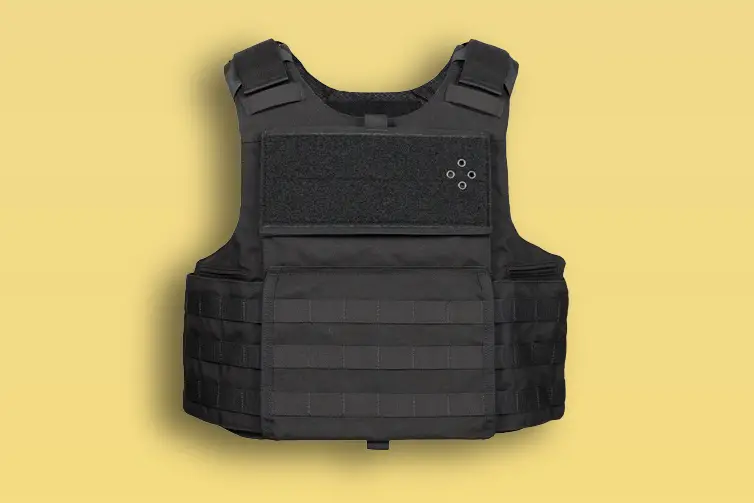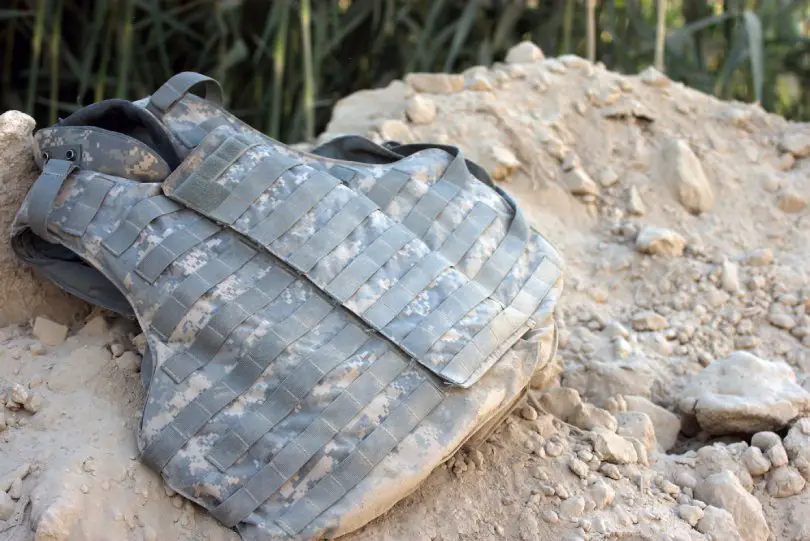How long do bulletproof vests last? According to the National Institute of Justice (NIJ), the average life expectancy of a bulletproof vest is 5 years. They can last much longer though so many factors come into play here.
For instance, what type of vests are we talking about? What caliber bullet can the vest resist? How often and in what conditions was the vest used?
So, yes you can say that bulletproof vests are supposed to last much longer and the manufacturers give a shorter warranty period for more sales.
But then again think about how stinky they will be after five years and what their condition might be after exposing them in all kinds of situations e.g. extreme temperatures or tough training sessions.
Also, Kevlar is the most common material used for bulletproof vests, which is actually a synthetic fiber that degrades over time.
You don’t want to compromise on your level of protection and safety for a mere $400 vest, do you?
How Long Do Bulletproof Vests Last: According to Types
-
Soft vests
Made of para-aramid substances like kevlar, they are more prone to deteriorate faster. Kevlar is a soft fiber that’s easily harmed by water (read – your sweat) as it loosens its chemical bonds.
Kevlar is not really affected by temperatures below the melting point of lead. But high temperatures combined with darkness, sweat, and skin cells can cause bacteria and mold growth.
Unfortunately, you can’t throw your vest in the washer since kevlar is also affected by

Also, the UHMWPE (Ultra-high-molecular-weight polyethylene) plates and vests contain polyethylene, which can endure environmental exposure very well. Heat is the only problem with these types of vests.
According to NIJ certification, levels IIA, II, and IIIA generally fall into soft categories.
-
Hard vests
Vests made of steel and ceramics fall into the hard category. They can serve longer than the other types.
Hard armors like steel can last even 15-20 years but it’s also important to remember that not all steel is of premium quality and certified by NIJ.

Despite being harder, ceramic armors are lighter in weight but have a lower life expectancy than their steel-made counterparts.
The standard ceramic body armors only last 5-7 years and are more prone to break down when dropped or shot.
According to NIJ certification, levels III and IV generally fall into hard categories.
-
Composite vests
Composite armors have several layers of different materials such as metals, plastics, ceramics, or air.
The lifespan of these types of vests depends on the composition mixture they are using. In general, they last for around five years after daily use.
-
Hybrid vests
Hybrid vests are made using a combination of thousands of polyethylene or aramid fibers laid down in a unidirectional (UD) arrangement, and are held in place with a flexible thermoplastic matrix.
As they are made with aramid, they also last for around five years.
Factors That Determine a Bulletproof Vest’s Lifespan
Vest type
Bulletproof vests are vulnerable to hot and wet environments. The harder the vest, the more it’s able to endure the harsh weather elements.
So, harder armors last longer than the softer ones.
Humidity
If you mostly use your armor in moist environments, it’s going to affect your armor’s stability. This type of environment quickens the degradation process and renders your vest out of order quickly.
UV light
The ultraviolet light breaks down para-aramid chemical bonds, which is why it is harmful to your vest if it’s kept under sunlight for a long period of time.
The soft armors are mainly vulnerable here.
Cleaning
Follow the instructions usually found on the inner tag of the vest to know about the cleaning process of your specific type.
Generally, you have to take all the ballistic panels out of the vest and remove the straps and trauma plates before you wash it. It is better to hand wash the different parts separately and then dry properly.
You can also spot clean your vest as it’s not possible to wash it every day.
Storage
If you store your vest in a damp environment or a place that does not have enough airflow, this will quicken the degradation process of your vest.
UV rays will also harm the armor if kept under direct sunlight. What’s more, hanging the vest should be avoided too since this can enlarge the vest and make it unfit for your body.
The proper way of storing vests is to place them in a garment bag. Make sure that the vest is flat and it stays flat when stored.
Wetness
As said before, water loosens the fabric fiber by destroying the chemical bonds. This also invites mold and mildew, which can make your vest unusable sooner than your expectation.
Wearing frequency
If you wear your vest every day it’s not going to last as expected. Check for signs of wear and tear before you put it on every time. This is essential for maximum protection.
Damage
If you’ve encountered a shooting incident when the vest took some beating, don’t use it again since its structural integrity has been compromised; even if it looks good on the outside while there could be cracks, warps, or bends inside.
Body or weight changes
You need a perfect fit to allow your vest to protect your vital organs. If you’ve lost or gained significant weight and your vest doesn’t fit well anymore, it’s time to look for a fitter option.
Possible risks of using an expired vest
It is easy to guess the consequences of wearing an outdated vest! If your armor is old and worn out, it won’t be able to protect you much if a bullet hits you.
Always abide by the stated expiration date and recommendations given by the manufacturers.
When Should a Bulletproof Vest Be Replaced?
It is critical to check your vest regularly for any internal or external damage by experts.
If your vest has ever been completely submerged in water, the moisture must have penetrated the vest.
If this happens, the plate material might lose its integrity and you should consider replacing it immediately.
Here are some signs that should be checked:
- Creases
- Odor
- Tears
- Burns









Leave a Comment